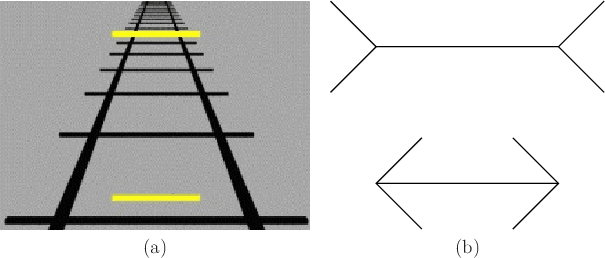
Next: 6.1.1 Monocular depth cues Up: 6.1 Perception of Depth Previous: 6.1 Perception of Depth Contents Index
 |
A piece of information that is derived from sensory stimulation and is relevant for perception is called a sensory cue or simply a cue. In this section, we consider only depth cues, which contribute toward depth perception. If a depth cue is derived from the photoreceptors or movements of a single eye, then it is called a monocular depth cue. If both eyes are required, then it is a stereo depth cue. There are many more monocular depth cues than stereo, which explains why we are able to infer so much depth information from a single photograph. Figure 6.1 shows an example. The illusions in Figure 6.2 show that even simple line drawings are enough to provide strong cues. Interestingly, the cues used by humans also work in computer vision algorithms to extract depth information from images [323].
Steven M LaValle 2020-01-06